Safe Water Resources Research Milestones
On this page, view by decade:
EPA’s water research provides the science and innovative technologies that the Agency and the nation need to maintain drinking water resources and systems, as well as to protect the chemical, physical and biological integrity of the nation’s waters. Here are some of our most important research achievements.
2020s

2024-Harmful Algal Blooms Forecasting
Through combining satellite information used in the forecasting models and large-scale field surveys, EPA researchers were able to model the risk of summer microcystin developing in the 2,192 largest lakes in the United States. Weekly live national forecasts were posted from July 1 to November 20, 2024 and received a total of 8,901 views generated by 2,578 unique users; forecasts will be resumed in Spring 2025.
Forecasting Models Publication
Weekly Live National Forecasts

2024-Drinking Water Protections
In 2024, EPA’s Drinking Water Treatability Database was updated to include 76 PFAS chemicals from 234 sources, and PFOA and PFOS individual entries were removed and added into the PFAs entry for improved customer access and experience.
Drinking Water Treatability Database

2024-Newly Identified Disinfection Byproduct
Municipal drinking water in the United States often uses chloramines to disinfect against harmful microorganisms, but these chloramines can break down and react with other compounds to form disinfection byproducts that may be toxic. EPA researchers worked with external partners to identify a chloronitramide anion as a disinfection byproduct of inorganic chloramine decomposition.
2024-DNA Metabarcoding with NARS
EPA researchers published a significant paper in Science of the Total Environment (STOTEN) on research using DNA metabarcoding to characterize national scale diatom-environment relationships in U.S. rivers and streams. This paper represents a substantial proof of concept and advance in using DNA metabarcoding as an indicator, particularly within the National Aquatic Resource Surveys (NARS) program.
2024-21st Annual Drinking Water Workshop
In September 2024, EPA held the 21st Annual Small Drinking Water Systems Workshop focused on PFAS and Lead topics and designed for government agencies responsible for drinking water regulations compliance and treatment technologies permitting. The workshop included technical presentation sessions, in-depth training sessions, breakout group roundtable discussions, topical deep dive and posters session, regional networking session, and other networking opportunities; there were 242 attendees from EPA, 40 states and state agencies, and 1 territory.
21st Annual EPA Drinking Water Workshop
2023-EPA Supports Innovative Water Reuse Technologies through SBIR
Water reuse, or the practice of reclaiming and treating water from a variety of sources, can help enhance the sustainability and resilience of our water systems as the climate changes and droughts become more common. EPA’s Small Business Innovation Research (SBIR) program is driving progress in the water reuse technology field, funding small businesses who are providing innovative new methods for reclaiming and treating water, reducing the demand on this natural resource and saving energy, money, and other resources.
2023-PFAS and Drinking Water
In FY23, WID updated EPA’s Drinking Water Treatability Database to include 66 PFAS chemicals from 197 sources. The database provides information on best practices and technologies for PFAS treatment in drinking water. Information on cost models for PFAS treatment in drinking water was also generated. EPA provides support on PFAS treatment modeling for the development of the PFAS drinking water regulation.
2023-Long-term Trends in US Stream Macroinvertebrates
Documenting long-term trends in macroinvertebrate communities can lead to new insights regarding how the quality of streams has changed across the US. The National Aquatic Resource Surveys (NARS) is a major national program aimed at understanding the state of the nation’s
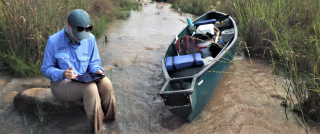
waters and provides critical data on stream macroinvertebrates across the contiguous U.S. EPA scientists found total densities of macroinvertebrates over the past 27 years have decreased by 11% and urban and agricultural streams lost the few disturbance-sensitive taxa they once had and gained disturbance-tolerant taxa, indicating ongoing environmental degradation. The scope of this analysis across such a long-time span and at national scale is the first of its kind for NARS and provides a road map for how to extend the insights of these data.
2022-EPA Adds CyanoBacteria Data to Two Important Tools
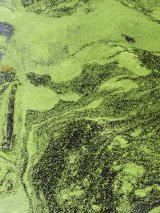
HABs can produce toxins that can sicken or kill people and animals, create dead zones in water, raise treatment costs for drinking water, and harm recreation and other industries that depend on clean water. In 2022, EPA researchers added cyanobacteria in lakes data to two important products – EnviroAtlas and the Report on the Environment (ROE), which are two powerful tools that help states, tribes, and communities understand their environments and make informed decisions.
EPA's Report on the Environment (ROE)
2022- EPA Research Supports Nisqually Tribe and Community Forest
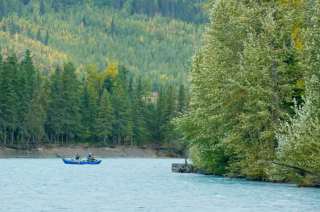
EPA collaborated with the Nisqually Tribe and Community Forest in Washington to develop scenario-based simulations that identified ecological forest management practices for restoring degraded stream habitat critical to spawning and rearing success of Chinook salmon and steelhead trout. This work led to the tribe receiving the PISCES award for Excellence in Community Engagement: Nisqually Tribe in Washington—Mashel River Protection.
EPA Recognizes 49 Water Infrastructure Projects for Excellence and Innovation
2022- EPA Releases The National Lakes Assessment: The Third Collaborative Survey of Lakes in the United States

EPA’s Office of Water released the National Lakes Assessment (NLA), which reports on the condition of lakes and reservoirs in the conterminous United States. Results from the NLA can help us better understand the condition of lakes in the United States, some of the stressors affecting them, and how stressors relate to local conditions. This was a cross-Agency effort led by OW with significant support from EPA researchers, EPA regions, and more.
National Lakes Assessment: The Third Collaborative Survey
of Lakes in the United States
2022- Advancing Methods to Detect PFAS in the Environment
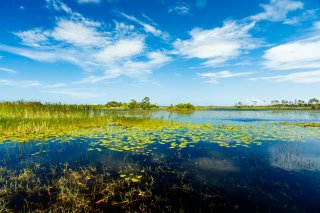
EPA continues its work to develop and validate methods to detect and measure PFAS in the environment — releasing a new Adsorbable Organic Fluorine method (draft Method 1621) in April 2022 as well as EPA Method 1633, a method to detect 40 PFAS in eight environmental media.
CWA Analytical Methods for Per- and Polyfluorinated Alkyl Substances (PFAS)
2022- EPA Scientists and Partners Team Up to Tackle Cape Cod’s Nutrient Pollution and Protect Water Quality
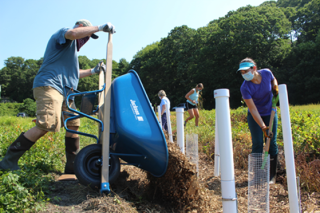
Like many places in the country, Cape Cod’s coastal waters are under stress from excess nutrients. EPA researchers collaborated with federal, state, and community partners with the common goal of restoring the water quality and natural ecosystems on which the region depends.
2021 - New Village Blue Project Offers New Orleanians Insights into Their Water Quality

EPA launched Village Blue Lake Pontchartrain, a water quality monitoring project in New Orleans, to help the community learn more about their local water quality and its greater connection to the Mississippi River. Water sensors at a site near the New Canal Lighthouse on the south shore of Lake Pontchartrain record measurements of select water quality parameters every hour and display the data in real-time online.
2021 - EPA Scientists Develop Tool that Provides Information on U.S. Freshwater Resources
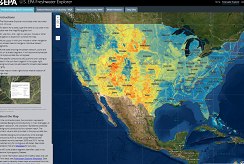
Scientists and partners developed Freshwater Explorer to help U.S. communities understand national and local water quality issues. The tool provides water quality information to help federal, state, territory, tribal, and local partners make decisions about freshwater resources, and can be used by anyone to better understand national and local water quality issues.
2021 - EPA Releases a Web Tool to Help Monitor Water Quality
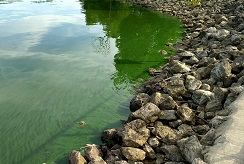
EPA released Cyanobacteria Assessment Network (CyAN) Web, a tool that helps federal, state, tribal, and local partners identify when a harmful algal bloom may be forming where people swim, fish, and boat. The tool uses satellite data to alert users based on specific changes in the color of the water in over 2,000 of the largest lakes and reservoirs across the U.S.
EPA Releases Cyanobacteria Assessment Network (CyAN) Web Tool to Help Monitor Water Quality
2021 -Researchers Advance the Understanding of How Climate Change Will Affect Harmful Algal Blooms in Reservoirs
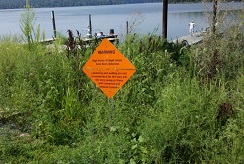
Climate change and ongoing nutrient pollution may cause more frequent and intense cyanobacterial blooms. However, there is limited historical monitoring data that can show the rate and severity of the potential increase. To address this issue, scientists collaborated with U.S. Army Corps of Engineers to compile and analyze over 30 years of monitoring data from 20 U.S. reservoirs located in Indiana, Kentucky, and Ohio.
2021 - EPA Releases Enhanced Aquifer Recharge Report
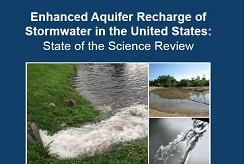
EPA released a report that provides a summary and synthesis of scientific and technical literature on Enhanced Aquifer Recharge (EAR) using stormwater. The report can be used to inform recommendations for safe, effective EAR using stormwater in different development and hydrogeologic settings.
2021 - EPA Develops Tools for Nutrient Management
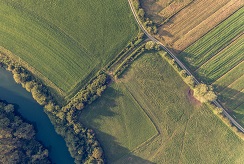
EPA developed several tools for nutrient management that can be used to make decisions to protect water quality from nitrogen pollution. These include a comprehensive input and output budget for nitrogen in the transboundary Nooksack watershed between Washington state and Canada; and modeling frameworks (VELMA, Atlantis, and Salish Sea models) to help planners visualize how benefits and tradeoffs of decisions will impact terrestrial and marine ecosystem services.
Key components and contrasts in the nitrogen budget across a US-Canadian transboundary watershed
Visualizing Ecosystem Land Management Assessments (VELMA) Model - 2.0
2021 - Next Gen Fertilizer Challenges Seek Greater Efficiency
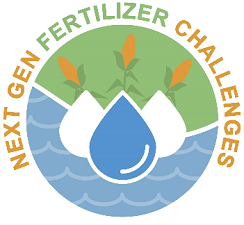
Two new Next Generation Fertilizer Innovation Challenges focused on “Enhanced Efficiency Fertilizers” (EEFs) as a type of new formulation that controls fertilizer release or alters reactions to reduce nutrient losses to the environment. The challenges have identified 16 promising EEF solutions already on or near market.
Next Gen Fertilizer Challenges
2020 - EPA Research Helps Protect Recreational Water Quality

EPA research has advanced protection of recreational water from harmful pathogens with the development of new fecal contaminant detection methods and the strengthening of the scientific basis of existing methods, source tracking, predictive tools, and health effects assessments. The science is supporting the recreational water quality criteria (RWQC) recommendations to protect the public from exposure to harmful levels of pathogens from fecal contaminants in all water bodies designated for recreational use.
Research to Support and Implement Recreational Water Quality Criteria (RWQC)
2020 - EPA Develops Methods to Detect COVID-19 in Wastewater to Inform Public Health Decisions
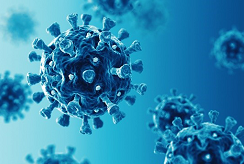
Genes specific to SARS-CoV-2, the virus that causes COVID-19, can be detected in wastewater and monitored as a sensitive early indicator of low levels of infections in the community. In swift response to the global pandemic, researchers developed and applied methods to detect different forms of the virus and the genetic marker in wastewater. to help accurately monitor prevalence of COVID-19 in communities and inform public health decisions.
EPA’s SARS-CoV-2 Research: Assessing Virus Levels in Sewage for Community Level Screening
SARS-CoV-2 in Wastewater Monitoring (September 2020 webinar recording)
2020 - EPA Releases a Suite of Tools to Remove Contaminants from Water
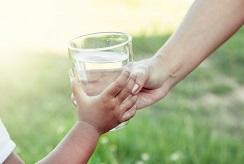
EPA created a suite of software models to help evaluate and design systems that use granular activated carbon or ion exchange resins for the removal of contaminants, including PFAS, from drinking water and wastewater. The models provide states and utilities with a better understanding of the fundamentals of carbon adsorption and what that means to the operation, performance, and costs associated with this technology.
Environmental Technologies Design Option Tool (ETDOT)
Water Treatment Modeling Tools for PFAS and Other Contaminants (April 2020 webinar recording)
2020 - EPA Funds Studies of Wildfire Impacts on Drinking Water Quality
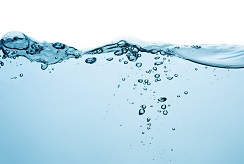
Wildland fires may impact watersheds and drinking source water through increased sedimentation and mobilization of nutrients, heavy metals, and other pollutants. EPA funded two projects that provide modeling and decision support tools that can help explore treatability and adaptation strategies for impacted water systems.
2020 - EPA Moves EPANET to an Open-Source Platform
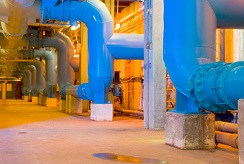
Researchers worldwide use EPANET to model water distribution systems. EPA moved it to GitHub, an open-source platform. The release maintains and extends EPANET and includes major updates to the hydraulic and water quality engines of EPANET 2.00.12.
2020 - EPA and USDA Launch Next Gen Fertilizer Challenges
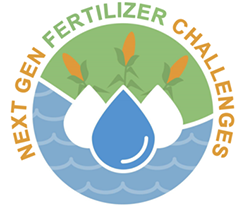
EPA established a partnership with the U.S. Department of Agriculture to advance agricultural sustainability in the U.S. via two challenges. The challenges are designed to accelerate the development and use of innovative fertilizer technologies to maintain or increase crop yields and reduce environmental impacts to air, land, and water.
Next Gen Fertilizer Challenges
2020 - Annual EPA Drinking Water Workshop Goes Virtual
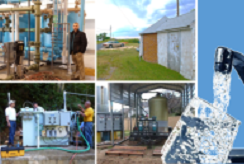
EPA’s 2020 Drinking Water Workshop, hosted in partnership with the Association of State Drinking Water Administrators, was held virtually for the first time. The virtual format allowed for broader participation, with in-depth training, technical talks, and breakout discussion groups spanning a range of topics related to solutions and strategies for handling small drinking water system challenges. Over 3,300 people attended worldwide.
Agenda and Recordings for the 17th Annual EPA Drinking Water Workshop (Virtual)
18th Annual EPA Drinking Water Workshop: Small System Challenges and Solutions
2020 - EPA’s Report Provides Real-World Data on the Impact of Green Infrastructure
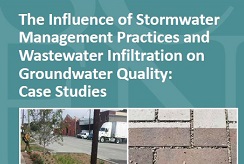
The use of green infrastructure can potentially mitigate local problems such as flooding and water shortages. This report provides real-world data that can be used by state, local and tribal agencies to understand the impact of using green infrastructure on groundwater quality for aquifer recharge.
2020 - EPA Launches Website Featuring PFAS Analytical Methods

EPA established a public website that consolidates PFAS analytical and sampling methods for drinking water, groundwater, surface water, wastewater, air, and solids, including soils, sediments, biota, and biosolids, some of which may eventually become standard or research methods. The website includes analytical methods resources from EPA and other federal agencies and non-governmental organizations, and sampling, data analysis, and laboratory certification resources.
PFAS Analytical Methods Development and Sampling Research
2020 - WMOST Updates Help Watershed Planning
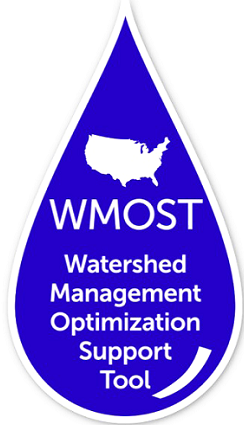
EPA published updates to the Watershed Management Optimization Support Tool (WMOST), including WMOST v3; WMOST v3.01, and a benefits module. The tool facilitates integrated water management and helps stakeholders to determine the most cost-effective management approaches to eliminate combined sewer overflows and meet water quality goals.
Watershed Management Optimization Support Tool (WMOST)
2010s
2018 – EPA Updates a Method for Treating PFAS
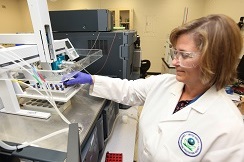
EPA updates Method 537 to quantitate 18 per- and polyfluoroalkyl compounds (PFAS) in drinking water. EPA had published the original Method 537 for detecting 14 PFAS in 2009. Since then, more PFAS that have the potential to contaminate drinking water have been identified or introduced in manufacturing as PFOA/PFOS alternatives.
Methods to Measure Waterborne Contaminants Research to Minimize Health Risks
2018 – EPA Adds PFAS Treatment to the Drinking Water Treatability Database

EPA’s Drinking Water Treatability Database provides public access to reference information gathered from thousands of peer-reviewed literature sources on the control of contaminants in drinking water. Researchers at the Agency update the database with information on the capabilities of drinking water treatment technologies for removal of per- and polyfluoroalkyl compounds. Researchers continue to keep the Database current with the latest technologies.
Drinking Water Treatability Database (TDB)
Research on Per- and Polyfluoroalkyl Substances (PFAS)
2016 - EPA Assesses the Impacts of Hydraulic Fracturing on Drinking Water

Congress requests a National Study on the Impacts of Hydraulic Fracturing on Drinking Water. EPA plays a key role in coordinating and staffing the research effort. In 2016, EPA releases the final assessment. The report concludes that hydraulic fracturing activities can impact drinking water resources under some circumstances. Impacts can range in frequency and severity, depending on the combination of hydraulic fracturing water cycle activities and local- or regional-scale factors.
EPA Releases Final Report of the Potential Impacts of Hydraulic Fracturing on Drinking Water Resources (Blog by Tom Burke)
2015 - EPA Improves Testing of Recreational Water

EPA begins a multi-year field study of the health effects of beachgoers exposed to fecal-contaminated recreational water. The epidemiological study developed dose-response associations between novel, faster approaches to measure water quality and health symptoms among swimmers. The research directly informed revised recreational water quality criteria.
Research to Support and Implement Recreational Water Quality Criteria (RWQC)
2015 - EPA Develops New Methods for Testing Drinking Water for Algal Toxins
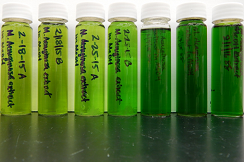
EPA scientists finalize a new method for determining the presence and concentrations of cyanobacterial toxins in drinking water. These toxins are produced by harmful algal blooms in water and cause health risks for humans and animals.
Recreational Water Quality Criteria and Methods
Methods to Measure Waterborne Contaminants Research to Minimize Health Risks
2015 - EPA Teams with Federal Partners to Fight HABs
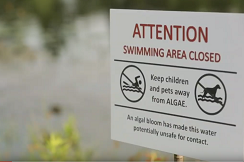
EPA teams with the National Aeronautics and Space Administration, the National Oceanic and Atmospheric Administration, and the United States Geological Survey to form the Cyanobacteria Assessment Network with a focus on developing tools using satellite data to help protect the public from harmful algal blooms (HABs) in fresh water.
Recreational Water Quality Criteria and Methods
Cyanobacteria Assessment Network Application (CyAN app)
2014 - EPA Focuses Support on Small Drinking Water Systems
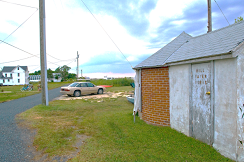
EPA begins an outreach campaign to support state and local officials with small drinking water systems. EPA’s small systems training workshops and webinars continue to provide in-depth information on various solutions and strategies for handling system challenges and included the latest in EPA research.
Small Drinking Water Systems Research
2012 - EPA Collaborates on the NetZero Project
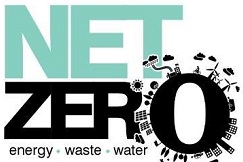
EPA launches the Net Zero initiative with the Department of Energy and U.S. Army Corp of Engineers. Net Zero is a collaboration focused on developing and applying innovative approaches for reducing water use, and repurposing, recovering and recycling water resources at Fort Riley and other U.S. military bases.
2012 - EPA Develops Virtual Beach Software

EPA develops a rapid method to determine within four hours if water is safe for recreational use, and a Virtual Beach software suite that uses local data such as wave height, water temperature and rainfall to forecast concentrations 24-48 hours in advance. The science is used to update the national recreational water quality criteria.
2011 - EPA Launches a Water Technology Innovation Cluster

In partnership with the Small Business Administration, EPA announces the formation of Confluence, a Water Technology Innovation Cluster in the Dayton/Cincinnati/Northern Kentucky/Southeast Indiana area. Water clusters help solve the Nation's environmental challenges by spurring technology innovation. EPA’s Cincinnati research facility was selected for this initiative because of its rich research and development infrastructure to anchor the effort technically.
2000s
2007 - EPA Begins the Aging Water Infrastructure Research Program
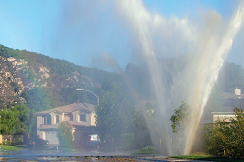
EPA begins an initiative to develop innovative technologies for the operations, maintenance, and replacement of aging and failing drinking water and wastewater systems. Researchers conduct the critical science and engineering needed to improve and evaluate promising innovative technologies and techniques for more effective operation and maintenance of systems.
Aging Water Infrastructure Research
2005 - EPA Advances Microbial Source Tracking

EPA researchers develop advanced microbial source tracking assays for protecting recreational waters and drinking water sources. The novel DNA sorting technique known as Genome Fragment Enrichment can identify sources of fecal pollution. This speeds up the implementation of appropriate corrective measures and lowers the cost of cleanup.
Research to Support and Implement Recreational Water Quality Criteria (RWQC)
2001 - EPA Adopts New Standard for Arsenic in Drinking Water
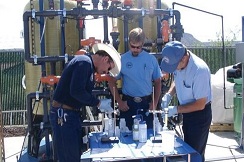
Based on the latest research, EPA adopts a new standard lowering the permissible amount of arsenic in drinking water from 50 µg/L to 10 µg/L. To help states meet these new standards, EPA researchers evaluate innovative and cost-effective water treatment technologies. With 50 demonstration projects in 26 states, EPA provides water utility operators and regulators with important information about removing arsenic from drinking water.
Arsenic Treatment Technology Demonstrations
1990s
1997 - EPA Evaluates Treatment of Surface Water Used for Drinking
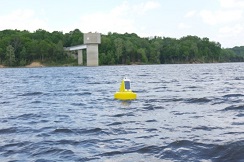
EPA completes the first community intervention study evaluating the public health benefits associated with Agency-mandated treatment of surface water used for drinking. This study is key in the National Estimate of Waterborne Diseases and in enforcement actions.
Drinking Water Requirements for States and Public Water Systems
Study of Waterborne Disease Occurrence
1994 - EPA Releases a Model for Drinking Water Distribution Systems
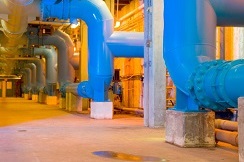
EPA releases the first version of EPANET, which is used throughout the world to model drinking water distribution systems. It can also be used to evaluate resilience to security threats or natural disasters. EPANET helps water utilities maintain and improve the quality of water delivered to consumers.
1993 - EPA Focuses Water Research on Fighting Pathogens
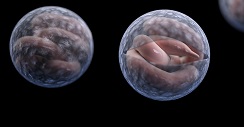
EPA researchers begin a decade of research focused on disinfection, treatment, and development of methods to treat stubborn pathogens. This follows the 1993 Cryptosporidiosis outbreak in Milwaukee and the 1991 reauthorization of the Clean Water Act.
Cryptosporidium and the Milwaukee Incident
Cryptosporidium: The Milwaukee Experience and Relevant Research
1970s
1977 - EPA Research Supports National Drinking Water Standards
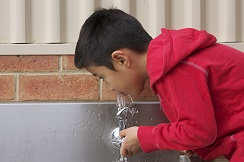
National drinking water standards go into effect for the first time. All public water suppliers are required to test their public water routinely and notify their customers if water was not up to EPA standards. EPA scientists support the drinking water standards with robust research.
Drinking Water Regulations and Contaminants
1975 - EPA Opens a Facility Focused on Drinking Water Research

EPA chooses Cincinnati, Ohio as the site for its primary water research programs. A new water research facility is dedicated by President Gerald R. Ford as the EPA Environmental Research Center. The facility is later renamed in honor of its first director and is internationally recognized for drinking water research.
Andrew W. Breidenbach Environmental Research Center (AWBERC)
1972 - EPA Research Supports the Clean Water Act
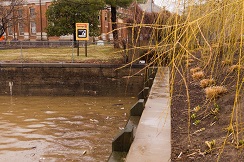
Congress passes the Clean Water Act to restore and maintain the nation’s waters by preventing pollution. EPA science continues to support the implementation of the Clean Water Act.
Summary of the Clean Water Act
1972 -The US and Canada Cooperate to Clean Up the Great Lakes
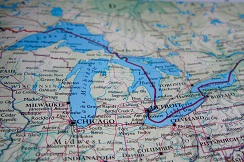
The U.S. and Canada agree to clean up the Great Lakes, which contain 95 percent of North America's fresh water and supplies drinking water to approximately 25 million people. EPA science contributes to the assessment and clean-up of the lakes.
Great Lakes Water Quality Agreement (GLWQA)
1971 - EPA Develops the Storm Water Management Model (SWMM)

EPA scientists develop and release the first version of SWMM. The model now incorporates green infrastructure practices and is used widely throughout the world and is considered the gold standard in the design of urban wet-weather flow pollution abatement approaches.
Storm Water Management Model (SWMM)
1960s
1969 - A Fire on the Cuyahoga River Highlights the Need to Protect the Environment
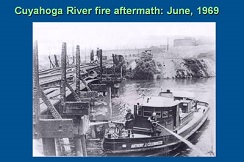
The Cuyahoga River in Ohio becomes so polluted that it catches on fire. The fire helped spur an avalanche of water pollution control activities, such as the Clean Water Act and the Great Lakes Water Quality Agreement. By bringing national attention to water pollution issues, the Cuyahoga River fire is one of the events that led to the creation of the U.S. EPA and the Ohio EPA.
